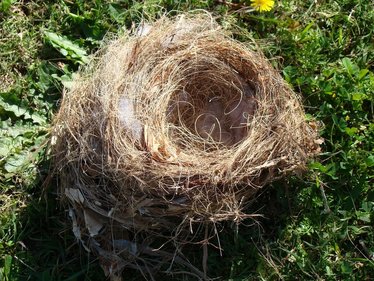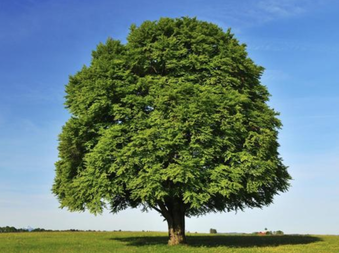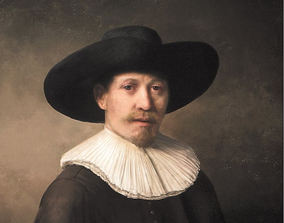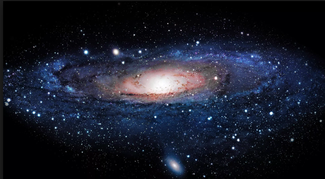|
John Cage was known for his mesostic poems. Here is one I creates with a Post Personalism message: I found that David Hockney's statement intersected nicely with Eckhart Tolle's presence.
1 Comment
 Does a bird create itself? There are two common answers to that question: Someone might say God created the bird. Another might say the evolutionary process created the bird. Either way, it is clear that the bird did not create itself. Therefore, however the bird was created, the bird was an effect of a cause. To be clear, my greater point has nothing to do with religion or science. It has only to do with bringing your attention to the obvious fact that a bird is not its own origin. It's origin preceded it. But, does a bird create its nest? Let's say you saw the bird creating the nest. So, yes, the bird created the nest. However, if the bird was the result of a creative cause, then by extention, what the bird creates must also be a continuing effect of that same creative cause. Therefore, in this analogy, our bird cannot claim so called personal credit for creating the nest. (Maybe a little, but only from the most narrow self-centric point of view). And now we come to the central point. Are nests all that different than works of art? No. Is it true that artists are also creative in a similar manner as nest-building birds are? Yes. Just as our analogous bird, the artist cannot claim personal credit for what he or she creates. (Maybe a little, but only from the most narrow me-centric point of view). Because the artist, like the bird, is merely an outer manifestation of an inner creative force. And so, from the 30,000 ft level as they say, there is no isolated, or special artist creating anything. There is only the universe expressing itself.. There is a third answer to the question of how the bird was created. And that is the creative intelligence of the universe created the bird and the nest. By saying “creative intelligence of the universe” I am not inferring a supreme being such as is promoted in the theory of intelligent design. Rather, I am pointing to the fact that the universe expresses itself intelligently. The benefit of describing creativity this way is that it employs evolution and natural selection as its process but also recognizes the presence of an intrinsic intelligence that pervades all life. Philosopher Alan Watts suggested that the individual human being is a particular focal point in which the universe expresses itself as the true Self.  "Harmony" "Harmony" A friend asked me to explain Post Personalism. I said it was making art that communicates attributes of oneness, kindness and compassion through art. As is typical when I explain Post Personalism this way, he wasn't quite sure what I was talking about. So I said, let's imagine that you have tremendous artistic talent and could make anything you wanted. With that, how would you communicate the idea of harmony in a work of art? He thought for a moment then said he would use a tuning fork. Then I asked, how would you take the idea of the tuning fork and translate it into a concept of personal, social, political and racial harmony. He said he would "use multiple tuning forks, like a bouquet. And each tuning fork would produce a different note but all tuning forks would be together in the bouquet". And I said, You got it!—That's Post Personal art. Inspired by my friend's idea, I made this quick digital sketch of a bouquet of tuning forks.
https://youtu.be/cLF6tWblmGc
 Agnus Martin Agnus Martin
In this video artist Agnus Martin sees Love filling the world. She also sees the ‘innocence of a tree’ and then somehow corresponds that to the image of a grid. Then she is seen turning and painting a single stripe down the center of a canvas. Her words and actions are an extraordinary juxtaposition.
Martin is so rooted in love and innocence that there is no separation between that reality and the painting of grids and stripes. You have to be a very awakened person to know love and innocence in the act of painting a stripe. You also have to have a very highly developed sense of perception. Most people looking at a stripe, or painting of one, and wouldn’t see or experience anything special. And yet, to Martin, that act of painting a stripe is a doorway into love and innocence. It transforms the austere stripe into a rarified form of beauty that only other lovers of innocent stripes can appreciate.  The greatest threat to humanity is not religious extremism, climate warming or nuclear war. It is the the inability of individual humans to see see themselves as unwitting slaves of collective unconsciousness. To state it theatrically, today the earth is populated almost entirely by zombies. The vast majority of humans today are like pale corpses staggering through almost-life, pushed around by TV, advertising, devices and the war on our attention. . . . Then suddenly the zombies (speaking through an interpreter) say to me: "Hey fancy mouth, you are human too so we are going to eat you!" And they begin lurching toward me. "Ok, that's fine." I say, "But before you eat me I should warn you that I am not merely human, I am post human! I may have a human appearance but I am human being. And if zombies eat being they will surely die!—I mean, in a good way this time. So I warn you, eat my flesh only if you can withstand the bitter taste of that truth!” The zombies halt their lurching and look at each other confused. The moral of the story is, when we are more being than human, we are no longer controlled by collective unconsciousness. So don't be a zombie artist. Make art consciously.  What is a tree if you do not call it a tree? What is a tree if you do not label it any kind of tree like a fir, or spruce. Or plant, or organism? What is it? And you cannot call it an assemblage of leaves, branches, trunk and roots. What is it? Imagine seeing a tree there before you. It clearly exists but what is it if there is no definition applied to it? Trees have been around longer than human language, so they have been something before humans called them anything. But what is a tree? Without any label it is mysterious. It is an undefinable expression of life. Because we name things, we think we know what they are, but naming them reduces them to a superficial concept. . . Like the words art and artist.  Willem de Kooning (1904-1997) Willem de Kooning (1904-1997) "The artist is a master of observation. He observes the world with penetrating depth. But there is one thing that is more difficult to observe than all others. And yet, when that one thing is observed with the same penetrating concentration, the consciousness of the artist becomes transformed. And that is to observe oneself inwardly.” -ph “On one level, observing your ego is to know yourself. At a deeper level, knowing yourself is being yourself”. - Eckhart Tolle  Someone asked: You say the creative process is always egoless. Please explain. Me: Remember, the creative process relates to how things are made. Let us not confuse how things are made with why they are made. Things can be made for egoic reasons but things cannot be made by the ego, at least not very well. In the creative process you cannot simultaneously create and hate, or disregard, what you create. If you try, you will find that it is terribly uncomfortable. You cannot build a house and simultaneously tear it down. If you do manage to get the house done, post a picture of it because it will surely go viral. Or to put it this way: the ego becomes very uncomfortable, even fearful when faced with the prospect of letting go to the natural creative flow of life. Or, let's put it yet another way: when a so-called bad guy throws a pot on the potter’s wheel it is the same creative process that a so-called good guy must use to throw a pot. However, regardless of their good or bad intended use of their pots, if either of them fight the clay and potters wheel, and resists the process of making it, then it will be the other guy who gets his pot made for however he intends to use it. The ego is never kind. Be kind to the creative process otherwise you will make it unkind to you.  “The object isn’t to make art, it’s to be in that wonderful state which makes art inevitable.” —Robert Henri (1865-1929) Artist and author of The Art Spirit. I think Robert Henri is saying the same thing as Morris Graves when he said "My first interest is in being, along the way I am an artist." They are both pointing to a dimension that is deeper within the artist. Idea for a cartoon: There are two paintings hanging in a museum and they are conversing while watching viewers pass by. One painting says to the other "Sure, you can call them human if you want, but what do they really mean?"
The Post Personal Project is about changing consciousness. Not merely changing the furniture of the mind. -ph
 Imagine for a moment that your head is a movie projector. Now imagine that the world you see before you is a projection of your mind. You see your world flowing outward from you and filling the space beyond as far as the lens of your eye can see. And whichever direction you turn, your mind continues filling that void out there with a brightly colored moving image of your world. Most people believe their world is real, but some philosophers believe the world is a dream created by the “dream machine” of the mind. Sometimes it’s a happy dream and sometimes tragic. But when we finally realize it’s only a dream, then however it is, is ok. It's just a dream. Then we avoid becoming a character in a movie of our own imagination.  Painting by Rembrandt Painting by Rembrandt I read an article about the computer that painted a perfect copy of a Rembrandt painting. I'm a big fan of the artist vs robot topic. I believe that very soon AI will not only be able to copy any artistic styles perfectly, it will also create its own styles that are heretofore unimaginable to humans, leaving human originality behind. However, robots will always have one major limitation compared to the human artist: Robots will never be able to create something beautiful as the result of deep inner suffering. |
AuthorPatrick Howe, Artist, Author, Educator, Electronic Music Composer Blog Categories
|






 RSS Feed
RSS Feed
